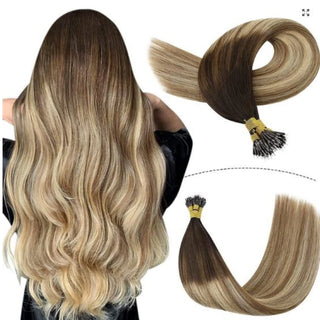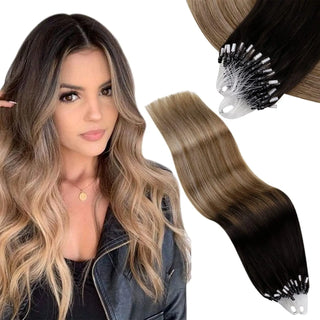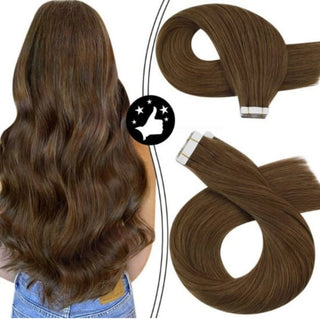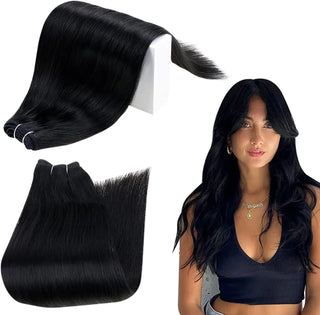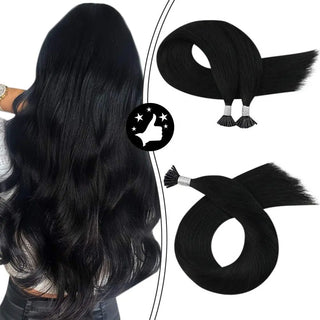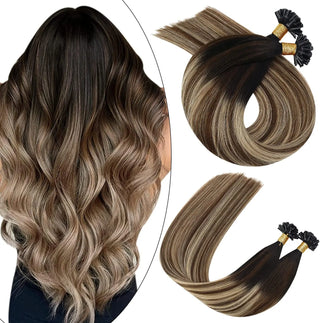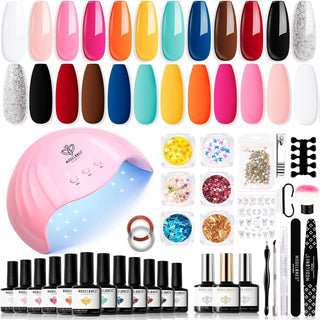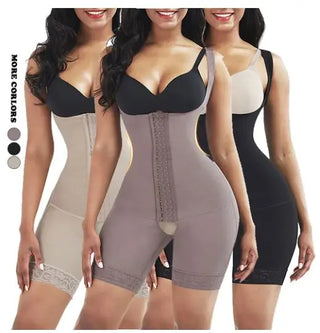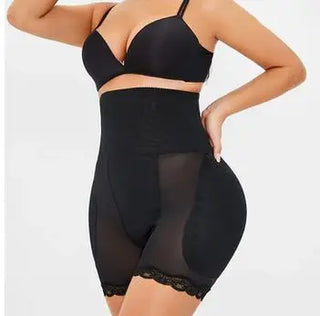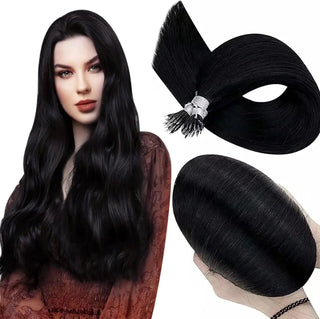Hair extensions have become a game-changer in the beauty industry, offering people the chance to achieve longer, fuller hair instantly. Among the various options available, nano ring hair extensions have gained popularity due to their discreet application and natural look. But how do they compare to other types of hair extensions? Let’s break down the key differences to help you decide the best option for your hair goals.
What Are Nano Ring Hair Extensions?
Nano ring hair extensions are a type of semi-permanent extension that uses tiny, lightweight rings to attach individual hair strands to natural hair. These rings are about 90% smaller than traditional micro rings, making them one of the most discreet extension methods available. Unlike other methods that rely on glue, heat, or sewing, nano rings offer a damage-free way to enhance hair length and volume.

Nano Ring Hair Extensions vs. Other Types
1. Nano Rings vs. Tape-In Extensions
Application Process:
-
Nano rings require individual attachment of small strands using tiny rings.
-
Tape-in extensions involve applying small wefts of hair that are pre-taped and sandwiched between natural hair strands.
Appearance:
-
Nano rings are virtually undetectable due to their small size.
-
Tape-ins can sometimes be visible, especially if the hair is thin or styled in an updo.
Damage Risk:
-
Nano rings cause minimal damage since they don’t involve heat or glue.
-
Tape-ins can cause damage due to adhesive removal and reapplication.
2. Nano Rings vs. Clip-In Extensions
Application Process:
-
Nano rings require professional installation and take around 2-3 hours.
-
Clip-ins are temporary extensions that can be applied and removed at home in minutes.
Appearance:
-
Nano rings blend seamlessly with natural hair.
-
Clip-ins can sometimes look bulky if not placed correctly.
Longevity:
-
Nano rings can be worn for months with proper maintenance.
-
Clip-ins are meant for occasional use and should be removed daily.
Damage Risk:
-
Nano rings are gentle on hair and cause minimal damage.
-
Clip-ins can cause breakage if worn frequently and pulled too tightly.
3. Nano Rings vs. Fusion (Keratin Bond) Extensions
Application Process:
-
Nano rings use small beads for attachment.
-
Fusion extensions use keratin bonds that are melted and fused onto natural hair.
Appearance:
-
Both methods provide a natural look when installed correctly.
-
Fusion bonds can sometimes be more noticeable as they grow out.
Longevity:
-
Nano rings last 8 to 12 weeks.
-
Fusion extensions last around 3 to 4 months before needing replacement.
Damage Risk:
-
Nano rings don’t require heat or glue, reducing damage risk.
-
Fusion extensions involvehttps://nzazu.com/ heat application, which can weaken natural hair over time.
Why Choose Nano Ring Hair Extensions?
Nano ring hair extensions stand out among other types because of their seamless blend, lightweight feel, and low maintenance. They are an excellent option for those who want luxurious hair extensions without the risks associated with glue or heat-based methods. Their durability and natural appearance make them a top choice for those looking for long-lasting volume and length
When choosing hair extensions, it’s essential to consider factors such as longevity, maintenance, appearance, and potential hair damage. Nano ring hair extensions offer a fantastic balance between discretion, durability, and hair health. Whether you're looking for a semi-permanent solution or luxurious hair extensions, nano rings might just be the perfect fit for achieving the voluminous, stunning hair you desire.

